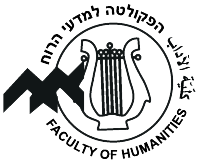Israel Academy of Science (ISF) Grant No. 1622/13
Roger Bacon (1214–1294) and the Making of the Concept of Law of Nature
Giora Hon and Yael Raizman-Kedar Department of Philosophy
University of Haifa
Abstract
Ever since the seventeenth century “laws of nature” has become an essential element in the conceptual vocabulary of modern science. Historians and philosophers of science regard the concept constitutive of the structure and premises of early modern science, yet the questions of its origin and development are still moot. Current literature makes three claims concerning its source: Cartesianism, medieval voluntarism and medieval mathematics. A fourth claim considers the source to be a combination of traditions and includes several lines of developments.
Studies of this concept had taken thus far a top-down approach. Taking the seventeenth century as the point of departure, these studies characterize the concept as used by one or several thinkers of the period and then proceed to look for the ancient or medieval antecedents. Such approaches are prone to anachronism. Our study takes a different approach, namely, it analyzes the concept as it appears in the writings of one medieval scholar, Roger Bacon. By developing a thorough analysis, an adequate comparison between the medieval and the early modern concepts can be maintained. The methodology that facilitates such a coherent account depends in large measure on an essential distinction between the analyst and the actor. In historical writing on scientific matters the analyst is the modern author and the actor is the scientist under consideration.
It is the objective of this study to examine in details Roger Bacon’s corpus and offer a comprehensive picture of the place and function of “laws of nature” in his general scientific program. The comprehensive picture we aim to achieve will link Bacon’s account of efficient cause, called the theory of “multiplication of species”, with his notion of physical and mathema-tical laws, a link that has never been sought for in current research.
The historical continuity of Roger Bacon’s concept of laws of nature will be examined over two parallel lines of development. The first deals with the distinction between universal and particular laws beginning with Bacon himself, then through Pierre D’ailly’s Imago mundi and Francis Bacon’s Novum Organon, to Boyle’s terminology of fundamental and general laws of nature, opposed to “municipal laws” or “customs of nature”. The second line of development concerns the formulation of mathematical-physical laws, beginning, again, with Roger Bacon then moving on to Peckham and Maurolico’s Photismi de lumine et umbra where he cites Bacon and Peckham and uses the term “lex” with reference to several optical phenomena.
Our research will consolidate insights into the move towards physical explanations in terms of efficient cause and its link to the quantification of matter in the form of law of nature. The project will thus make a significant contribution to some of the most pressing issues in the history and philosophy of early modern science.

